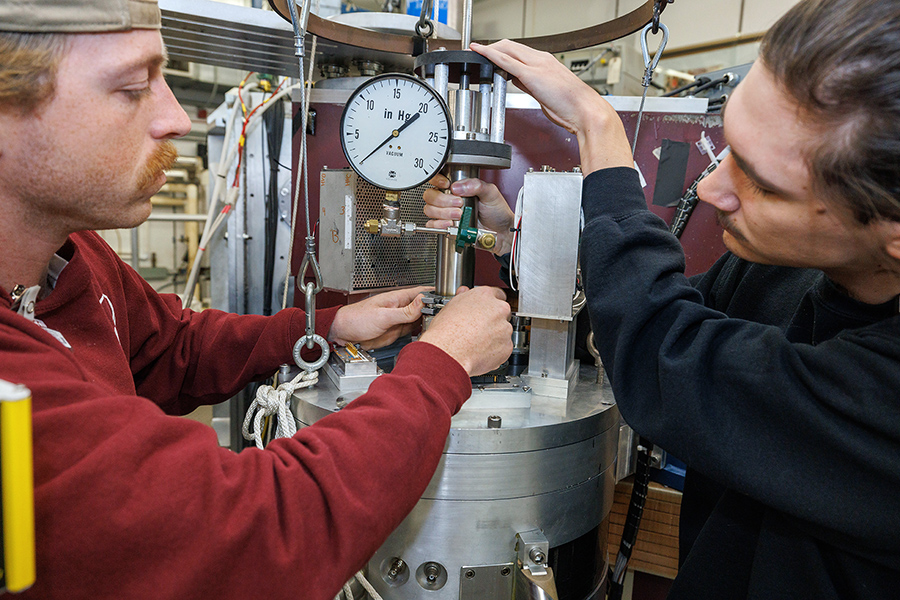Energy Secretary Dan Brouillette applauded the competitors, as well as everyone involved in the competition, “The students demonstrated exceptional problem-solving skills and excelled at both defending and sustaining operations of their systems. Thank you to all who contributed to making our first-ever virtual CyberForce a huge success!”
“CyberForce competitors are our Nation’s next generation of cyber defenders,” said Deputy Secretary of Energy Mark Menezes. “These students may one day work on the front lines defending our critical energy infrastructure — that’s why we challenge them through attacks by top cyber professionals.”
Each CyberForce Competition presents a real-world scenario in which participants must defend cyber-physical infrastructure against threats modeled on those faced by the energy sector today. The 2020 scenario involved a wind energy company in charge of over 20,000 megawatts of electricity generation that has been experiencing abnormal network activity.
“The American cybersecurity workforce is facing a gap in talent, and this competition is an exciting, engaging part of helping to fill that gap,” said Nick Andersen, Principal Deputy Assistant Secretary, Office of Cybersecurity, Energy Security, and Emergency Response (CESER). “Every year, we see incredibly promising students competing in the CyberForce Competition, and this year was no exception.”
DOE’s Argonne National Laboratory, which hosted the first-ever CyberForce in 2016, managed the virtual competition on behalf of CESER. Also helping to oversee this year’s event were Lawrence Livermore National Laboratory, National Renewable Energy Laboratory, Pacific Northwest National Laboratory and Sandia National Laboratory.
“Though this year’s competition was held virtually, it lost nothing in terms of suspense and impressive performances,” said Amanda Joyce, CyberForce Competition director and cybersecurity analysis group lead at Argonne. “The students who accepted the challenge of competing as individuals, rather than in teams as in previous years, have bright futures in the cybersecurity field.”
In addition to DOE CESER, the National Nuclear Security Administration, the Office of Energy Efficiency and Renewable Energy, and the Office of Science co-funded this year’s competition. Corporate sponsors of this year’s event included SANS, Cobalt Strike, Federal Training Partnership, Microsoft Azure Government, (ISC)2, American Fuel & Petrochemical Manufacturers, American Public Power Association, ICF, Trustwave, KeyLogic, General Atomics Electromagnetics, National Association of State Energy Officials, ComEd, CybatiWorks, and ISACA.
Winners of the 2020 CyberForce Competition are:
First place: Seth Manesse, Utah State University
Second place: Michael Roberts, University of Central Florida
Third place: Alexander Nead-Work, Oregon State University
Fourth place: Anna Andler, DePaul University
Fifth place: Sears Schulz, Carnegie Mellon University
For more information visit the CyberForce Competition website.
The Office of Energy Efficiency and Renewable Energy supports early-stage research and development of energy efficiency and renewable energy technologies to strengthen U.S. economic growth, energy security, and environmental quality.
Argonne National Laboratory seeks solutions to pressing national problems in science and technology. The nation’s first national laboratory, Argonne conducts leading-edge basic and applied scientific research in virtually every scientific discipline. Argonne researchers work closely with researchers from hundreds of companies, universities, and federal, state and municipal agencies to help them solve their specific problems, advance America’s scientific leadership and prepare the nation for a better future. With employees from more than 60 nations, Argonne is managed by UChicago Argonne, LLC for the U.S. Department of Energy’s Office of Science.
The U.S. Department of Energy’s Office of Science is the single largest supporter of basic research in the physical sciences in the United States and is working to address some of the most pressing challenges of our time. For more information, visit https://energy.gov/science.


